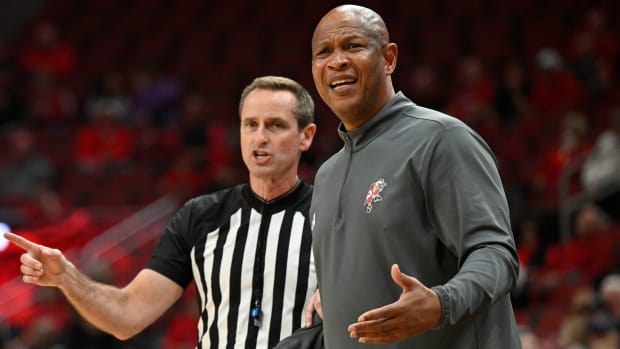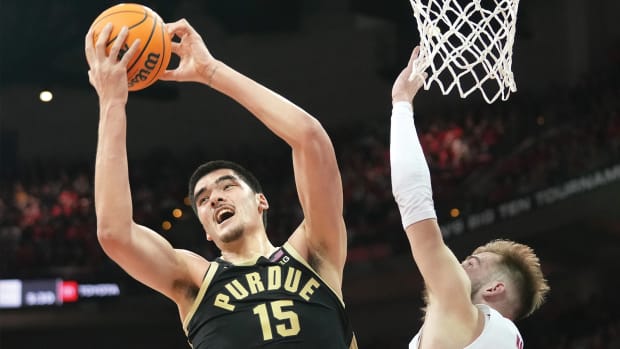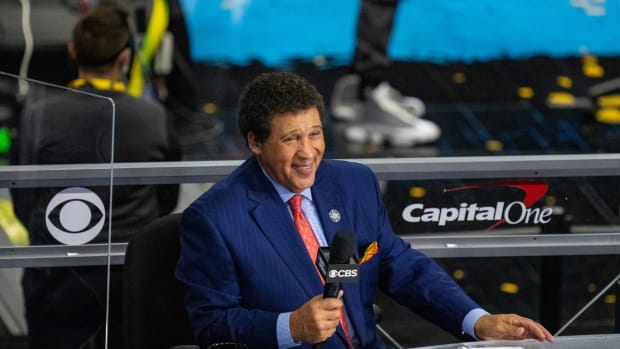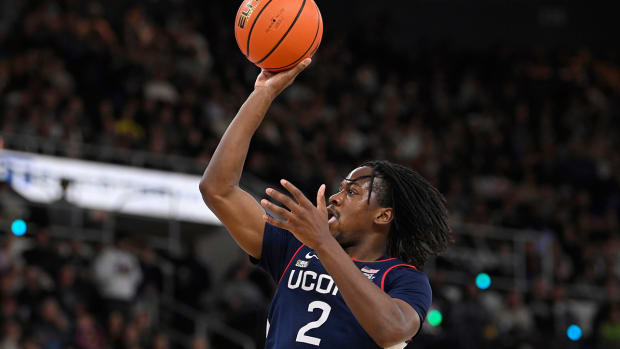In Retaining Clay Helton, USC Proves It Lacks True Interest in Returning to Elite Level
Today’s college football is an arms race. Whether it’s spending millions on premier head coaches, top assistants, major stadium upgrades or decked-out locker rooms, the message is clear for programs at the top: Win at all costs.
The price USC needed to pay to begin a trek back to college football’s elite was a reported $20 million buyout for Clay Helton. The same Clay Helton who has compiled a 13-14 record against Power 5 teams with a winning record. The same Clay Helton who has 12 double-digit losses in 61 games coached.
By sticking with a perpetual underachiever for another season when he’s essentially already been given five to prove he’s the right man for the job, the message is loud and clear in Los Angeles: USC isn’t fully committed to winning in today’s era of college football.
USC went 8-4 this season, including a 30-23 home win over 11-1 Utah. If you dig deeper, though, the Trojans’ record was not too impressive. The eight wins came against teams with a combined 46-50 record (.479). Of those eight wins, five came against teams where the quarterbacks who threw the most passes were backups and/or making their first collegiate start. The four losses came against teams with a combined 34-14 (.708) record. Once again, despite being on a similar playing field in talent, a Helton-led USC frequently withered against stronger competition.
Give Helton credit, USC has been consistent in other areas as well under his guidance. The Trojans have lost multiple games by double digits in each of the last five seasons. The Trojans have ranked between 113th and 124th in penalty yards per game in each of the last five seasons. And the program has shown for the majority of those five seasons that it is not close to competing for national titles. It has a long way to go before approaching the same level as the Alabamas, Clemsons and Ohio States of the sport.
So why is this season buying Helton another year? Following the 5-7 disaster in 2018, then-USC athletic director Lynn Swann retained him despite admitting problems “in areas that include culture, discipline, schemes, personnel and staff.” Helton made some changes to his staff this past offseason, most notably hiring Graham Harrell at offensive coordinator. On the other hand, he kept defensive coordinator Clancy Pendergast and special teams coach John Baxter despite those two units showing no signs of improvement. Sure enough, the defense and special teams consistently let USC down throughout the season.
Helton’s inability to identify major issues with his staff, even when this was supposed to be a make-or-break season for his tenure, is an enormous red flag. He elected for another year of more of the same on defense and special teams instead of trying a true strip down of the program. Newly hired USC AD Mike Bohn was in the same position here with Helton. Like Helton thought with his two coordinators, Bohn also foolishly believed that one more year would be the right solution despite years of evidence suggesting otherwise.
With Helton once again at the helm, USC is currently just another program, as its national relevance has shriveled up—except when it comes back into the fold as a punchline. It happens on the field—like having two players on the field with the same jersey number on the first play of the season, a penalty that wiped out a big kick return. It happens off the field—like seeing your newly hired offensive coordinator bolt for the NFL a little over a month into the job, and only negotiating a $150,000 buyout.
These are the types of situations that would be avoided by having a competent, non-lame-duck head coach. The jersey number mishap is something you wouldn’t expect from a first-year head coach, let alone one entering his fifth season already facing major questions about organization and discipline. Helton isn’t going to attract many big-name coordinators with shaky job security looming over the entire staff as long as he’s in charge, especially with the high costs of moving to and living in Los Angeles.
What makes this even crazier is that these are the shenanigans USC is willing to put up with… for a coach who has gone 13-11 over the past two regular seasons. And if USC doesn’t take itself more seriously about treating itself like a top-tier program, why should others continue to do so?
In fact, right now they’re not.
With the early signing period just a couple weeks away, the Trojans sit at 67th in 247Sports’ recruiting rankings, in between Louisiana and Troy. Only one Pac-12 team’s class is currently ranked worse. In the state of California, USC unthinkably doesn’t have a single top-20 prospect from the state committed. Clemson, Alabama, Georgia, LSU and Ohio State have each landed a top-six California recruit. Washington and Oregon have two apiece in the top 12. With USC’s national footprint already disappearing, its local standing is in clear danger as well.
And if Clay Helton already underachieved with top-10 recruiting classes from 2015-18, what about when USC’s incoming class slips to 20th in 2019 or potentially outside the top 50 this year?
High schoolers aren’t the only ones turned off by USC’s self-inflicted steady decline. From 2015-17, USC averaged over 70,000 in attendance for games at the Los Angeles Coliseum. USC has fallen short of the 60,000 mark in each of the past two seasons, as the fan base has drifted toward apathy. USC has continued to show a lack of urgency to fix its glaring issues, and as a result, people have responded with a lack of urgency to watch this football team play.
Yet, instead of making a change, USC has willingly opted to remain in this cycle of mediocrity, with no near escape in sight.
The Trojans open up next season with Alabama, have road trips to Oregon and Utah and host Notre Dame, Washington and Arizona State. The same Alabama that drubbed USC 52-6 to kick off Helton’s first full season as permanent head coach, which was the Trojans’ worst loss since 1966. The same Oregon that demolished USC 56-24 at the L.A. Coliseum this season, in Helton’s 58th game as head coach. Not much has changed under Helton in big games, especially away from the confines of Los Angeles, so why should a different outcome in those marquee matchups be expected next season?
With that schedule, it’s likely USC will find itself in the same position next year as a fringe top-25 team that still can’t contend with college football’s superpowers. But instead of using that year to instill change and attempt to convince recruits and fans that there’s a more promising future on the horizon, USC wasted it on a head coach who has displayed the same problems in Year 5 as Year 1.
And apparently Mike Bohn is content with that.




